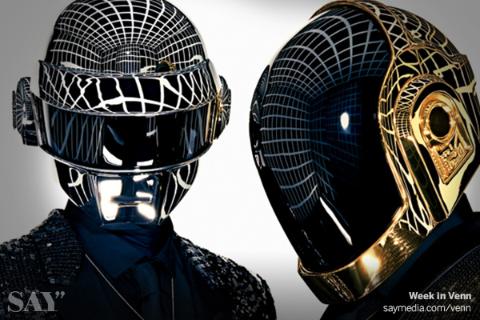Article Pages Are the New Home Page - Say Media

In the past year, we've seen an explosion in article page design pushing the envelope in terms of beautiful, rich, storytelling. I won't even mention the article from The New York Times that started the craze (it rhymes with "snowball") because now there are so many. These new article pages are telling stories through big images, videos, animations, transitions, interactive elements and, of course, compelling journalism. Recent favorites includeRolling Stone's "Greenland Melting," ESPN Grantland's Alaskan Iditarod profile " Out in the Great Alone" and, since these aren't all about snow and ice, Pitchfork's ode to Daft Punk, "Machines for Life." (And just in, The New York Times' latest mega feature The Jockey hit the virtual newsstands this week.) These page designs are great for getting lost in a storyline and driving one-time visitors, but they don't do a great job of creating a relationship with the reader or recommending the next article to read.
If that is one extreme, the opposite extreme is much worse. These are the article pages that are trying too hard to drive the site's features down your throat. They recommend so much content it becomes meaningless. They are constantly trying to get you to sign up or follow. These sites, far too common on the Internet, treat the story as secondary. They do not honor the reader or the content. I love Mashable, but does it really have to put the whole home page underneath every article, including infinite scroll? Bleacher Report should know that I only occasionally read sports media, but every time I visit this site, I get a huge modal request to follow.Digiday goes so far as to ask if a certain CafeMom page is the worst page on the Internet.
Time was, your typical media site would spend 80 percent of design and engineering resources on the home page and just 20 percent on the article pages. If you haven't noticed, those days are long over. In today's Internet world, visitors arrive at a site through the side door, namely via search, social or a referring link, and land directly on the article page. This means that the article pages, in addition to telling a great story, also have to perform the functions of a home page: They have to position the brand, set the site tone, merchandise content and calls to action, and even capture an email to ensure future touch points. Every page is a new home page (and also still an article page).
If the article page (or every page) is the new home page, publishers must find the design balance between the intentions of an article page and a home page. This is a big goal for us at Say Media. On one of our tech sites, ReadWrite, we've been trying out several different article page designs over the past 14 months. We're not done yet, but we think we are honing in on that right balance. Here are a few things we've learned:
- The story always comes first; other objectives come second.
- Fancy rich media is great, but only if it is tightly coupled to the story. (Corollary: Some stories might not call for graphics at all.)
- The design needs to be scalable; the editorial team must be able to make tens if not hundreds of these a month.
- The header and top navigation are key in setting the site tone and positioning the site for new visitors — no matter where you are on the site.
- Personalization is key; leverage a visitor's history or other data to recommend content or highlight new content they haven't yet read.
- Following and sharing should be present and frictionless but not forced — sharers will share.
- Recommended content should be curated; it's as much about the best stuff as it is about related topics.
- The right balance varies site-to-site; one size does not fit all and your technology should allow for this.
The media business is going through a massive transformation as it digitizes. For media properties to thrive, it is time to stop thinking about sites as top-down, home-page–led destinations and start thinking about the article page as your brand's first chance at a potential relationship with a new reader.
John Vars is vice president of product at Say Media. Follow him on Twitter @johnv .
[Image credit: Daft Punk ]
Say Media is a digital publishing company that creates amazing media brands. Through its technology platform and media services, Say enables its portfolio of independent content creators to build passionate communities around key consumer interest areas such as Style, Living, Food and Tech. For more information visit www.saymedia.com.
Read all Say Media's MediaBizBloggers commentaries at Say Daily.
Check us out on Facebook at MediaBizBloggers.com
Follow our Twitter updates @MediaBizBlogger
The opinions and points of view expressed in this commentary are exclusively the views of the author and do not necessarily represent the views of MediaBizBloggers.com management or associated bloggers. MediaBizBloggers is an open thought leadership platform and readers may share their comments and opinions in response to all commentaries.

